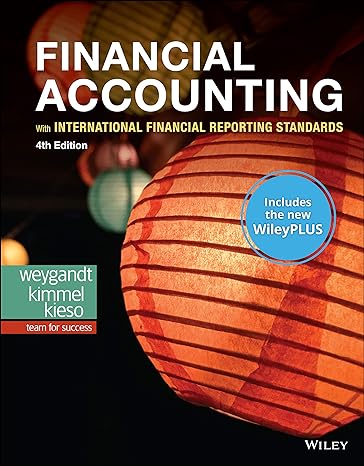
Identify TEN incorrect or inappropriate treatments/calculations in the following case and provide brief explanation as to why they are incorrect or inappropriate. A student is asked to conduct a company evaluation using the knowledge learned from AFIN3012. The company is an Australian high-growth technology company with a core technology protected by a series of patents expiring in 5 years. Its net income in the most recent financial reports were negative, partially driven by a colossal write-off, significant R&D expenses, and several acquisitions. The revenues were positive. The company's debt ratio is currently higher than the industry average which has resulted from borrowing to fund acquisitions. To begin with, the student conducts common-size analysis and computes profit margins as well as the arithmetic growth rates of sales and net income to gain some idea about the historical performance of the company. He then computes the cash conversion cycle (CCC) to understand the operating efficiency of the company. He finds that the CCC is negative due to a greater value of the payable payment period than the receivable collection period. He thus concludes that the company is low in efficiency. He also finds that the ROA is smaller than ROE due to a high financial leverage. Since the ROE is much higher than the industry average, he concludes that the company enjoys a competitive edge. Within the Porter's five-force framework, the student draws the following conclusion: a) since the switching costs are very high for the company's customers, the buyer power is high; b) since the company sources undifferentiated digital materials from a wide range of suppliers, the supplier power is high; c) although there are a considerable number of competitors, the company is insulated from the competition via patent protection, resulting in low rivalry in the medium term; d) the threat of new entrants falls in the medium range given high capital investments and high returns; e) the threat of substitutes is assumed to be medium for the sake of being conservative as more information is needed to make a judgement. The student uses both relative and intrinsic valuation methods. In the intrinsic valuation, he calculates FCFE using the reported net income from last year and deducts the net working capital as well as the net capital expenditure from the net income, without adjusting for R&D and acquisition costs. To forecast the growth rate of FCFE, he applies a high growth rate, which is the geometric growth rate of revenues using all available historical data, in the first 10 years. To get the discount rate, he conducts regression analysis to obtain the regression beta (0.75), using the S&P 500 as the market index. The risk free-rate used is the current 10-year Australian government bond yield, which is about 0.78%. Marginal tax rate and the company's current capital structure are used to obtain WACC. In the stable growth period, the student assumes Identify TEN incorrect or inappropriate treatments/calculations in the following case and provide brief explanation as to why they are incorrect or inappropriate. A student is asked to conduct a company evaluation using the knowledge learned from AFIN3012. The company is an Australian high-growth technology company with a core technology protected by a series of patents expiring in 5 years. Its net income in the most recent financial reports were negative, partially driven by a colossal write-off, significant R&D expenses, and several acquisitions. The revenues were positive. The company's debt ratio is currently higher than the industry average which has resulted from borrowing to fund acquisitions. To begin with, the student conducts common-size analysis and computes profit margins as well as the arithmetic growth rates of sales and net income to gain some idea about the historical performance of the company. He then computes the cash conversion cycle (CCC) to understand the operating efficiency of the company. He finds that the CCC is negative due to a greater value of the payable payment period than the receivable collection period. He thus concludes that the company is low in efficiency. He also finds that the ROA is smaller than ROE due to a high financial leverage. Since the ROE is much higher than the industry average, he concludes that the company enjoys a competitive edge. Within the Porter's five-force framework, the student draws the following conclusion: a) since the switching costs are very high for the company's customers, the buyer power is high; b) since the company sources undifferentiated digital materials from a wide range of suppliers, the supplier power is high; c) although there are a considerable number of competitors, the company is insulated from the competition via patent protection, resulting in low rivalry in the medium term; d) the threat of new entrants falls in the medium range given high capital investments and high returns; e) the threat of substitutes is assumed to be medium for the sake of being conservative as more information is needed to make a judgement. The student uses both relative and intrinsic valuation methods. In the intrinsic valuation, he calculates FCFE using the reported net income from last year and deducts the net working capital as well as the net capital expenditure from the net income, without adjusting for R&D and acquisition costs. To forecast the growth rate of FCFE, he applies a high growth rate, which is the geometric growth rate of revenues using all available historical data, in the first 10 years. To get the discount rate, he conducts regression analysis to obtain the regression beta (0.75), using the S&P 500 as the market index. The risk free-rate used is the current 10-year Australian government bond yield, which is about 0.78%. Marginal tax rate and the company's current capital structure are used to obtain WACC. In the stable growth period, the student assumes







